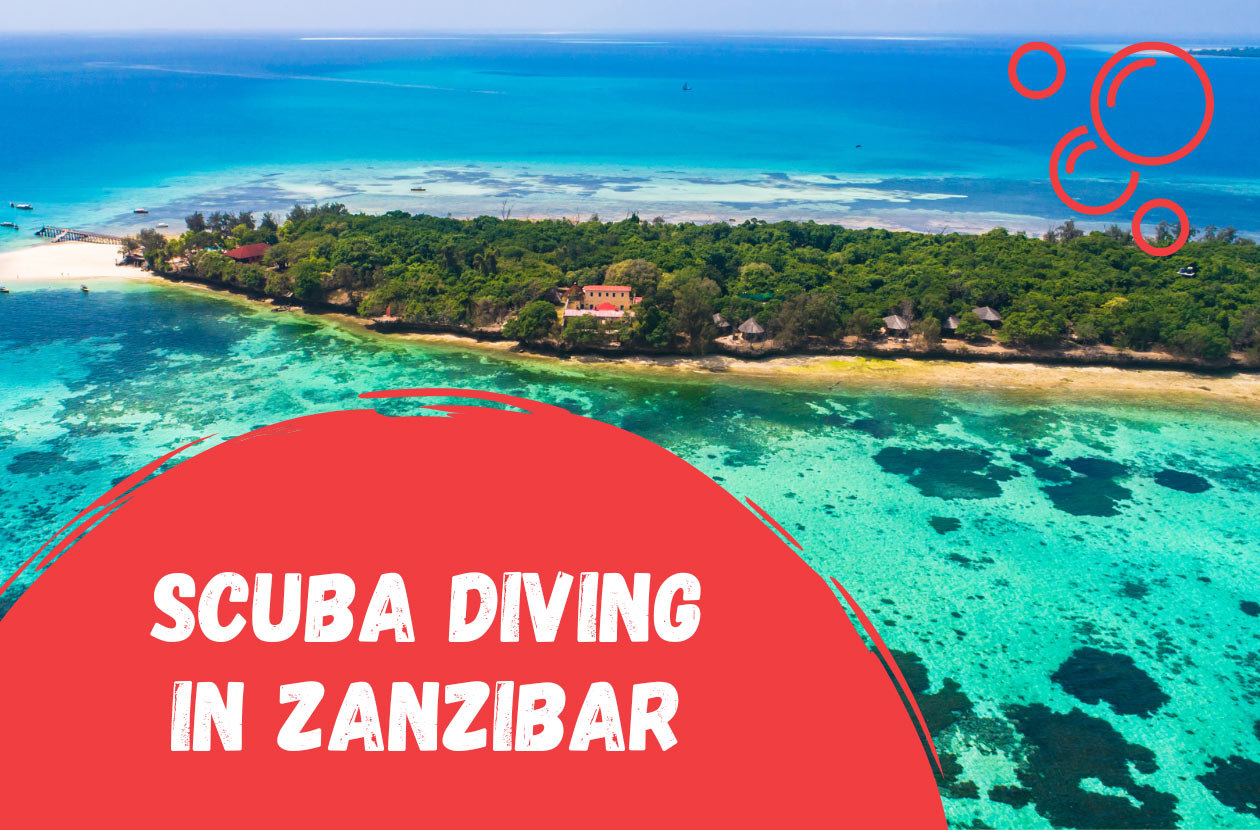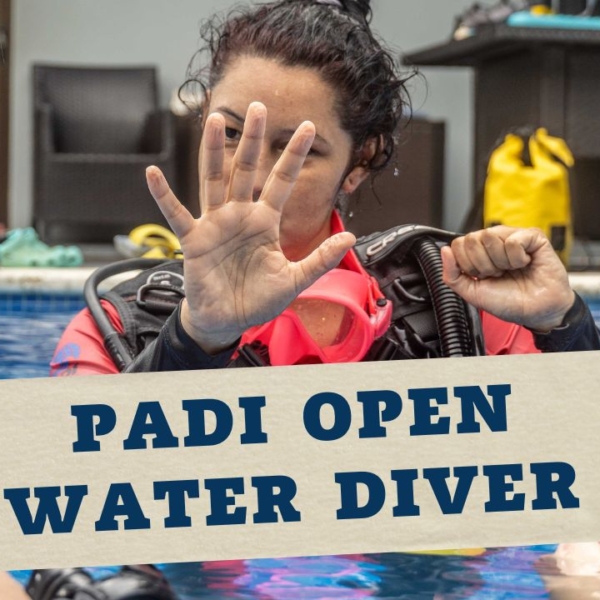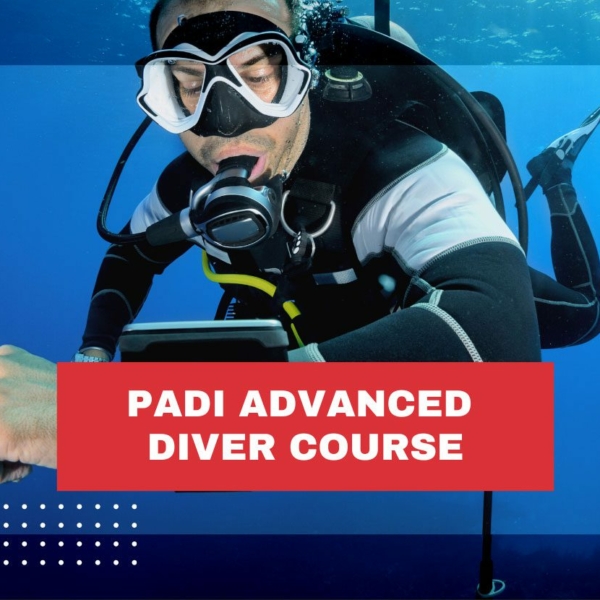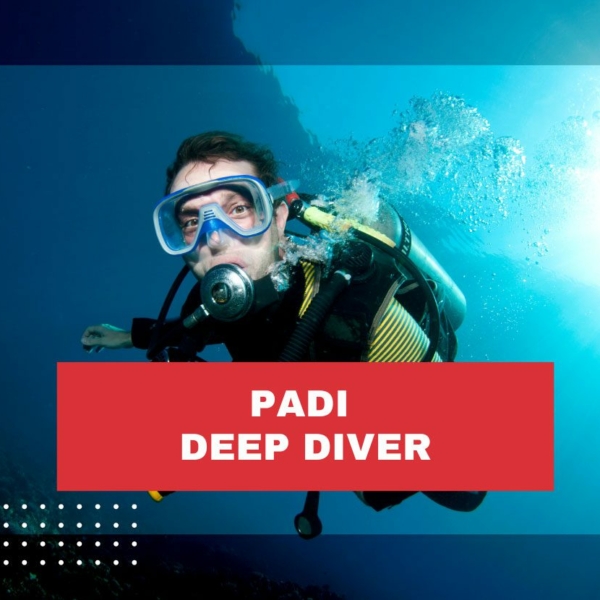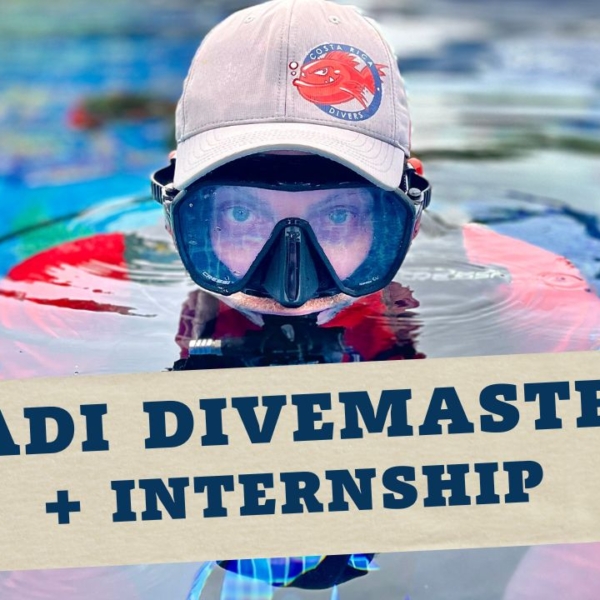An underwater museum is something that doesn’t come to mind first when thinking of any museum. But the fact is that there are now several underwater museums for divers in the world that are definitely worth a visit. Let’s take a look at the most interesting of them.
There are several large underwater museums that have even been talked about in the mass media. I’m talking about the underwater museum in Mexico, for example. But in fact there are many more, and they will become a great attraction not only for divers. When planning a diving trip, you should consider visiting such a place.
Table of Contents
What is the underwater museum?
An underwater museum is nothing more than an artificial coral reef. Figures or submerged objects create space for marine organisms to settle and live. In this way, we help nature to recover and at the same time we can have a great opportunity to see something unusual underwater.
One of the most famous artists, sculptors in the underwater world is Jason deCaires Taylor. It is thanks to him that many of these underwater attractions were created. He was even recognized by Forbes as one of the 100 most inspiring leaders in the world.
Why are artificial reefs being created?
An underwater museum, in other words, is an artificial reef. Why do we create such places? Artificial reefs are created to restore or enlarge an existing reef that has been completely or partially destroyed. This could be the result of natural disasters, human activity, coral bleaching due to climate warming. And it is precisely to help rebuild this destroyed environment that we are creating artificial reefs, that is, a surface on which the embryos of corals and other organisms will settle. These are also new places of refuge for sea creatures.
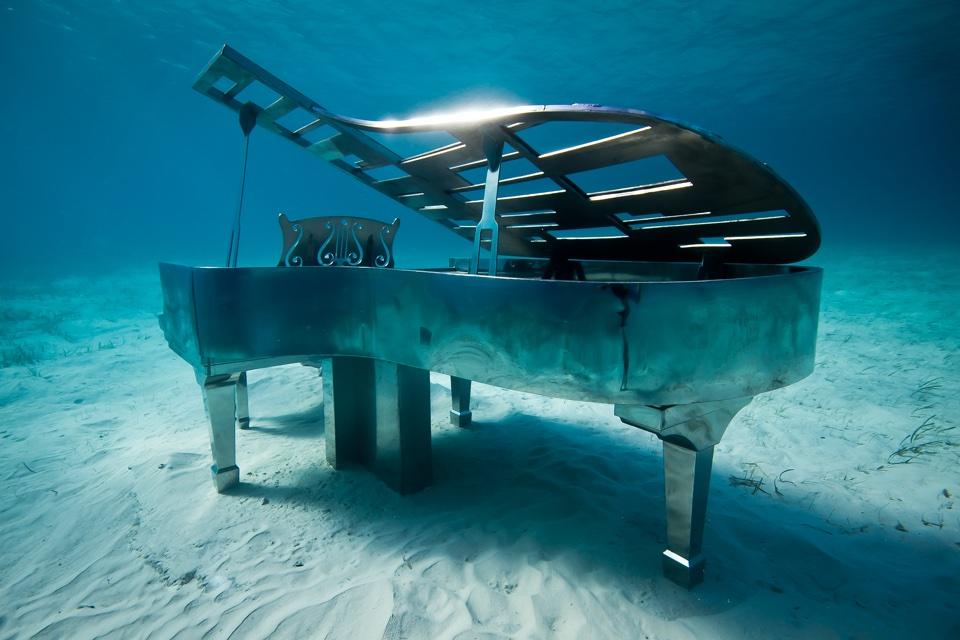
In addition, we are creating an attraction where tourists, swimmers or divers could admire the coral reef. This helps relieve the pressure on the natural reef, which is in the process of being restored. It also helps educate the public and raise awareness. For example, in many places around the world, in the Maldives, a run fall hotel organizes “reef planting” by tourists, while qualified personnel (such as marine biologists) talk about the dangers of the coral reef and what we can do for it.
Where can an artificial reef be planted?
An artificial reef can’t be planted just anywhere and in any way. The site for the underwater museum must be specially selected for such a project and have the right conditions. The construction itself must also be well thought out and not negatively affect the environment.
An example of such a bad approach to planting coral, let’s take the situation in Florida in the 1970s. At that time, 2 million used tires were dumped into the water, hoping that a coral reef would form around this and fish would come. Unfortunately, the tires gave off toxic substances and not only did nothing grow around them, but the lake became even more desolate.
In addition, the whole project was completely reckless, as the structure of the tires was too smooth for corals to permanently attach to them. What’s more, they moved during every storm, making it even more difficult for anything to settle there. In 2007, the cleanup of these tires began. So far, with the help of the military, only 250,000 submerged tires have been fished out and several million dollars have been spent. So as you can see, tires can do more harm than good….
What else to know about underwater museums?
Great artificial reefs are shipwrecks. Many wartime shipwrecks are excellent examples of artificial reefs that are vibrant places years later. You can find such sites in the Red Sea, the wreck at Tulamben in Bali, wrecks around Malta, Japan and many others around the world. There are places in the world where such ships are specially sunk, such as the area around Koh Tao in Thailand with the wreck of the HTMS Sattakut. A ship that has been decommissioned and is to be sunk must, of course, be properly prepared beforehand.
Remember the tire story? We don’t want toxic waste in the water, so all oil, grease and fluids that could endanger the environment must be removed. Such a sunken wreck is a great opportunity for divers to learn wreck diving, and a great place for underwater creatures. However, you must remember a few safety rules. If you do not have a wreck license, you should not go inside the wreck. And, of course, as always, when visiting an underwater museum, behave the same way you would on any other dive – watch, but don’t touch.
Underwater museums around the world
You already know what underwater museums are and why they are created. Now let’s see where you can see them and which ones are the biggest attraction for divers and tourists. And we have plenty to choose from!
Underwater Museum of Art (MUSA), Mexico
The largest underwater museum in the world, more than 500 figures: local residents from Puerto Morelos, a banker, an angel, a car and more. It consists of 2 parts: Salon Machones – 8m deep accessible to divers and snorkelers, and Salon Nizuc – 4m deep for snorkelers only. The waters around Cancun are the most visited waters in the world (not only by tourists from North America, but also from other parts of the world). This allows visitors to divide their time between the natural and artificial reefs to their advantage. It was modeled on the 90 fishermen, men and women whose lives are connected to the sea.
- Since 2009.
- depth 4-8m.
Ocean Atlas, Bahamas
East coast from Nassau. Presents a Bahamian woman bearing the weight of the ocean. It refers to the Greek myth of Atlas. Crystal clear and warm water allows you to see the sculpture while snorkeling.
As our oceans and coral reefs currently face many threats, including overfishing, habitat loss, ocean acidification, global warming and water pollution, this artwork symbolizes the burden we are now asking future generations to bear, and the collective responsibility that we must take to prevent it.
- Artist Jason deCaires Taylor.
- Since 2014.
- 5m deep.
Pensacola Florida, USA
Works and installations by a group of artists relate to maritime and environmental themes (such as the blowgun sculpture showing the vulnerability of the marine environment to human action). Entrance to the museum is free and no reservation is required. However, there is a fee to enter the state park. The museum is for divers only.
- since 2018,
- depth: 18 meters.
Musician, Bahamas
It shows a mermaid and a piano. The instrument plays soft classical music as the divers approach. The melody is similar to the sounds of whales and dolphins. The installation is located in Musha Cay, Exumas in the Bahamas near the private island of illusionist David Copperfield.
- Artist Jason DeCaires Taylor.
- Since 2011.
- 4 m deep.
Moliniere, Grenada
Jason deCaires Taylor’s first underwater museum and the first of its kind in the world. It shows, among other things, a circle of children holding hands, facing outward toward the currents that bring nutrients and food. It is a metaphor that we thrive because of what we absorb. Locally, it was associated more with unity and the fight against slavery. Nearby, a man can be found sitting at a desk with a typewriter. Considered one of the 25 world wonders according to National Geographic. It is 75 works spread among rock and coral formations. Easily accessible at a depth of 5-8 meters for divers, freedivers and snorklers. You can come here by boat (including one with a glass bottom) straight from the capital St. George and from Grand Anse. The museum was established as a response to the destruction of the reef that occurred in 2004 during Hurricane Ivan.
It is located in the Molinere Beauséjour Marine Protected Area. Many years ago I came across this photo on the Internet and saved this place on my bucket list to visit. Will it happen to be Grenada or another museum by Jason deCaires Taylor? I don’t know that yet.
- Artist Jason deCaires Taylor.
- Since 2006.
- 5m deep.
Underwater museum in Cannes, France
This is the first installation by this artist in the Mediterranean Sea. The installation consists of 6 faces (each 2 m high and with a weight of 10 tons). The water in the area is crystal clear and transparent. The faces rest on the white sand among the sea meadows.
It is located near the island of Sainte-Marguerite. The faces are divided in half: one side of the face represents the ocean and the other its sensitivity.
- Artist Jason deCaires Taylor
- Since 2021,
- depth is 3-4 meters.
Rising Tide, River Thames, London, UK
The statues can be viewed from the shore, dry footed. Riders on horses on the Thames banks are above or below the surface, depending on the water level. The casual reference to the 4 horsemen of the apocalypse symbolizes the climate crisis facing humanity.
The statues symbolize the human desire to control the forces of nature, but their position in a large water reservoir shows our fragility in the face of nature.
- Artist Jason deCaires Taylor.
- Since 2015.
- depth is up to 8m
Tarkhanut Crimea, Ukraine
When the Soviet Union collapsed, it became apparent that Ukraine had an overabundance of monuments to Lenin and other communist leaders and thinkers. Vladimir Broumenskyy, a diver from Donetsk, collected some of the fallen heroes and sunk them near Tarkhanut in Crimea, creating “Avenues of Conductors.” Divers will find there the heads of Lenin, Marx, Stalin and other communists. The statues, not just Soviet ones, and have increased over time. Today, divers who visit can see more than 50 statues, not only human, but also deities, mythical figures or miniatures of world-famous monuments (such as the Eiffel Tower or Tower Bridge in London).
- Since 1992.
- depth: 10-12 m.
Baia Underwater Park, Italy
The ancient city of Baia went under water due to volcanic eruptions and shifting land masses. Baia is also known as the Las Vegas of the ancient Roman Empire. The archaeological park is suitable for glass-bottom boats, snorkeling and scuba diving with equipment.
- Depth 4 meters
Nexus, Norway
An installation consisting of 12 human figures in and above the water in an Oslo fjord. Accessible by snorkelers, divers and transparent kayaks.
The project was commissioned by Sjøholmen, a local children’s center. The installation is to encourage youngsters to explore the ocean. The charges should be engaged in monitoring marine life in this project.
Figures submerged in water like a womb remind us that life on Earth began in the ocean and our survival depends on it. Sediment from falling leaves in autumn gives the water a golden color.
- Since 2018.
- 2 m deep.
- Artist Jason deCaires Taylor.
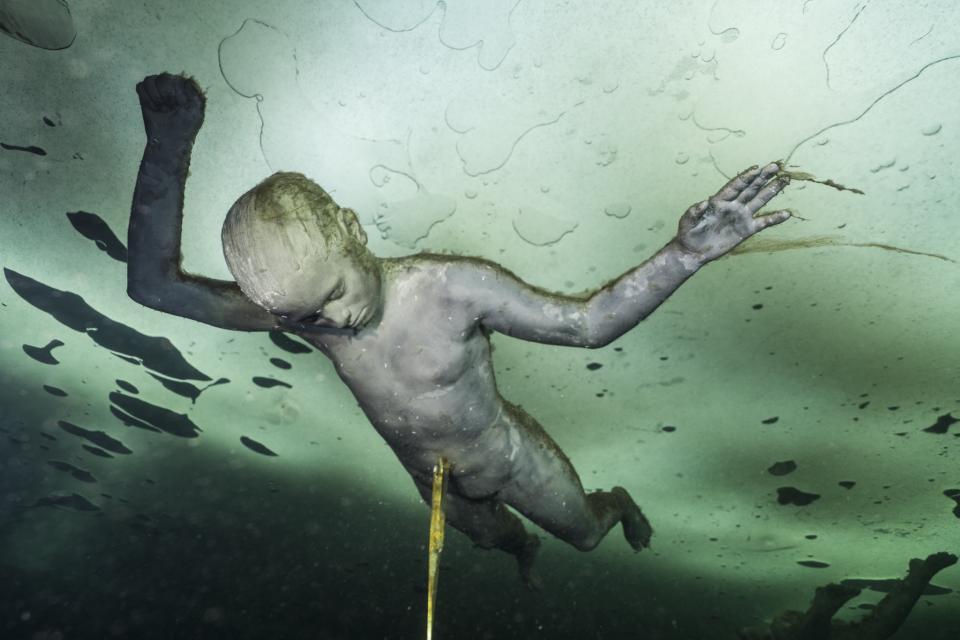
Underwater Museum, Museo Atlantico Lanzerote, Spain
The first such museum in Europe.
It is located in the Lanzerote UNESCO World Biosphere Reserve.
Available for snorkelers and divers. Large schools of colorful tropical fish, barracuda, sharks, sardines, octopus and occasionally stingrays can be found on site.
In total, more than 300 human figures can be admired. “Crossing the Rubicon” presents 35 people, delighted with their phones, wandering to a gate from which there is no turning back.
One of the installations embodies 13 refugees being led into the unknown. This is a reference to the sailors in the painting “Medusa’s Raft,” and while they see help on the horizon, their fate is still uncertain and unknown in the storm. Just like the fate of refugees today.
- Artist Jason deCaires Taylor.
- Since 2016.
- 14 m deep.
Underwater Museum, MUSAN, Ayia Napa, Cyprus
130 beautiful figures of people and trees forming the first underwater forest, referring to the history, mysticism and nature of the region. With their tall structures, they attract different sea creatures at different levels.
You can go snorkeling or scuba diving. This underwater museum does not charge an entrance fee, but you must make a reservation with one of the local dive centers (whether snorkeling, freediving or scubadiving). There can’t be too many people in the water at one time. It is located in Parnera, a protected area on the southeastern part of the island.
Over the last 20 years, Mediterranean stocks have shrunk a lot. There are far less fish here, mainly due to overfishing. The museum was built on a sandy area and is designed to attract sea creatures.
- Artist Jason deCaires Taylor.
- Since 2021.
- depth of 8-10 m.
Museum of Underwater Art, MOUA, Australia
The first underwater museum in the Southern Hemisphere. It is located on John Brewer Reef on the Great Barrier Reef. These are massive structures and sculptures that form an underwater coral greenhouse (The Coral Greenhouse). Adapted for snorkeling and diving. The structure of the “Coral Greenhouse” refers to organic architecture.
- Artist Jason DeCaires Taylor.
- Since 2019.
- depth of 12 m.
Bask Gili Meno, Indonesia
Warm and crystal clear water. Installation of a nest built of 48 human figures. There is also a large population of sea turtles.
Over the past decades, we have lost more than 40% of coral reefs. “The Nest” (that’s the name of the installation) is intended to remind us how many delicate natural treasures the ocean hides.
- Artist Jason DeCaires Taylor.
- Since 2017.
- Depth of 4 m.
Coralorium, Fairmont Hotel, Sirru Fen Fushi, Maldives
Beautiful art installation Coralarium in the shape of a cube with plant ornaments. Located in a beautiful place, half submerged in turquoise water. It is located in the largest lagoon of the Shaviyani atoll. It can be approached by boat or reached from the shore.
So far, it is Taylor’s largest and most complex structure. It weighs 180 tons, was made in the UK and assembled on site in the Maldives.
It hit the headlines when, during the election campaign, government representatives came and pulled figures of people out of the water and destroyed them with axes. In the religion of Islam, images of people and animals are not presented. However, angered international public opinion chastised the conservative Muslim country that religion and law also forbid the consumption of alcohol and pork, which are nevertheless available in all resorts in the Maldives. Before the elections, this was considered a purely political game. The installation has now been restored and shows coral structures.
One of the most beautiful (in my opinion) installations by artist Jason DeCaires Taylor. Nowadays, the human statues have been replaced by corals.
- Artist Jason DeCaires Taylor.
- Since 2018.
- 3-5m deep.
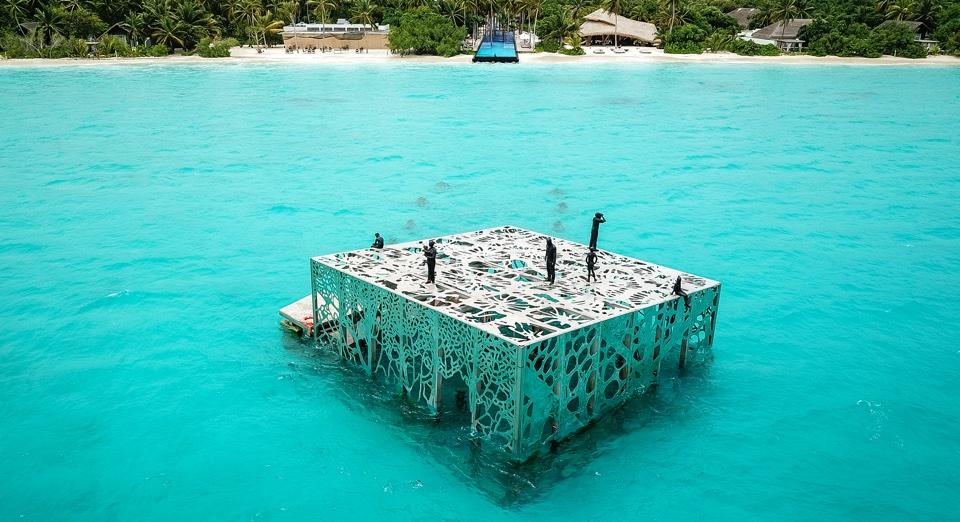
Underwater museums. Let’s recap
Underwater museums are not only a tourist attraction, but also a way any save the coral reef and educate visitors. The point is that if we don’t do anything to protect the marine environment, it won’t be long before there’s nothing left for us to look at while diving, except artificial objects. Oceans without even a single fish. Even without the ugliest fish in the world 🙂 Is this our future?
—
The rights to the photos belong to the author: https://www.underwatersculpture.com



